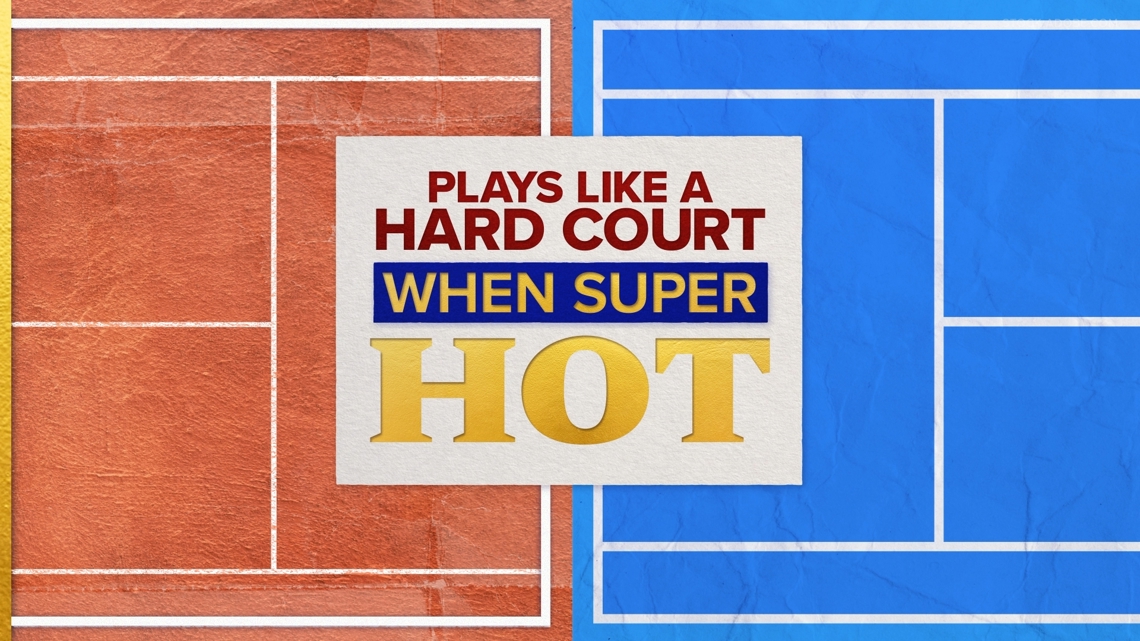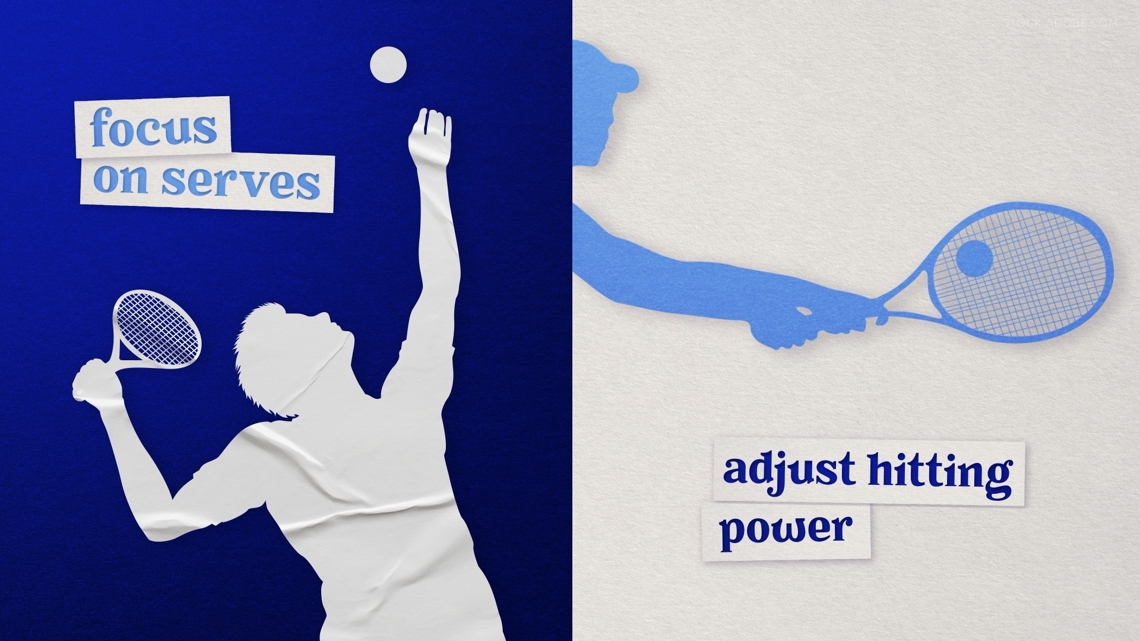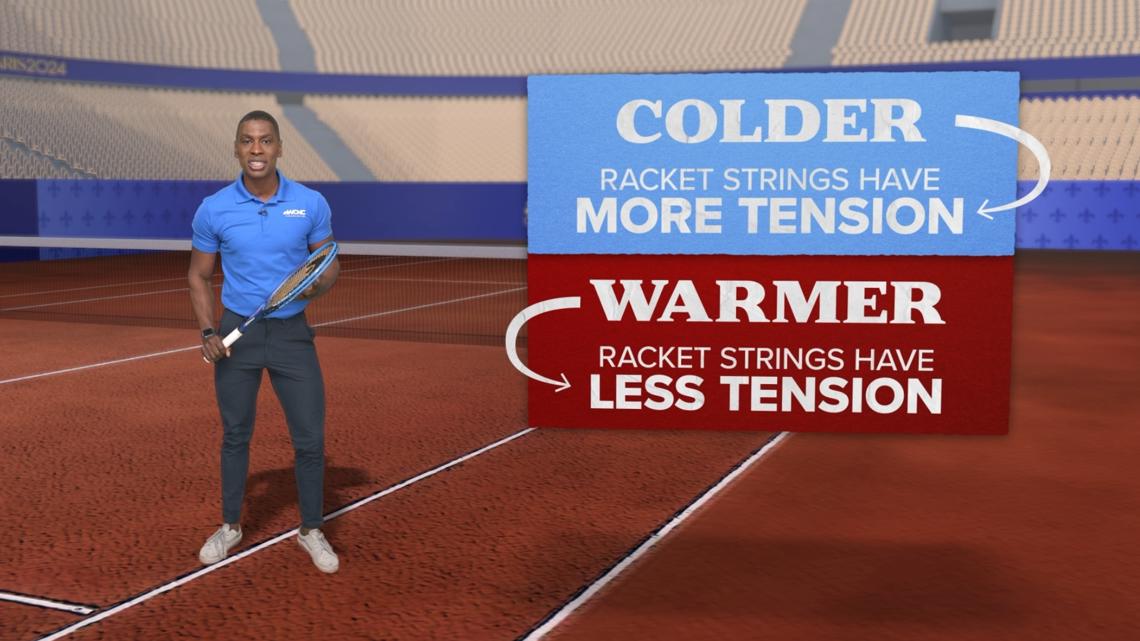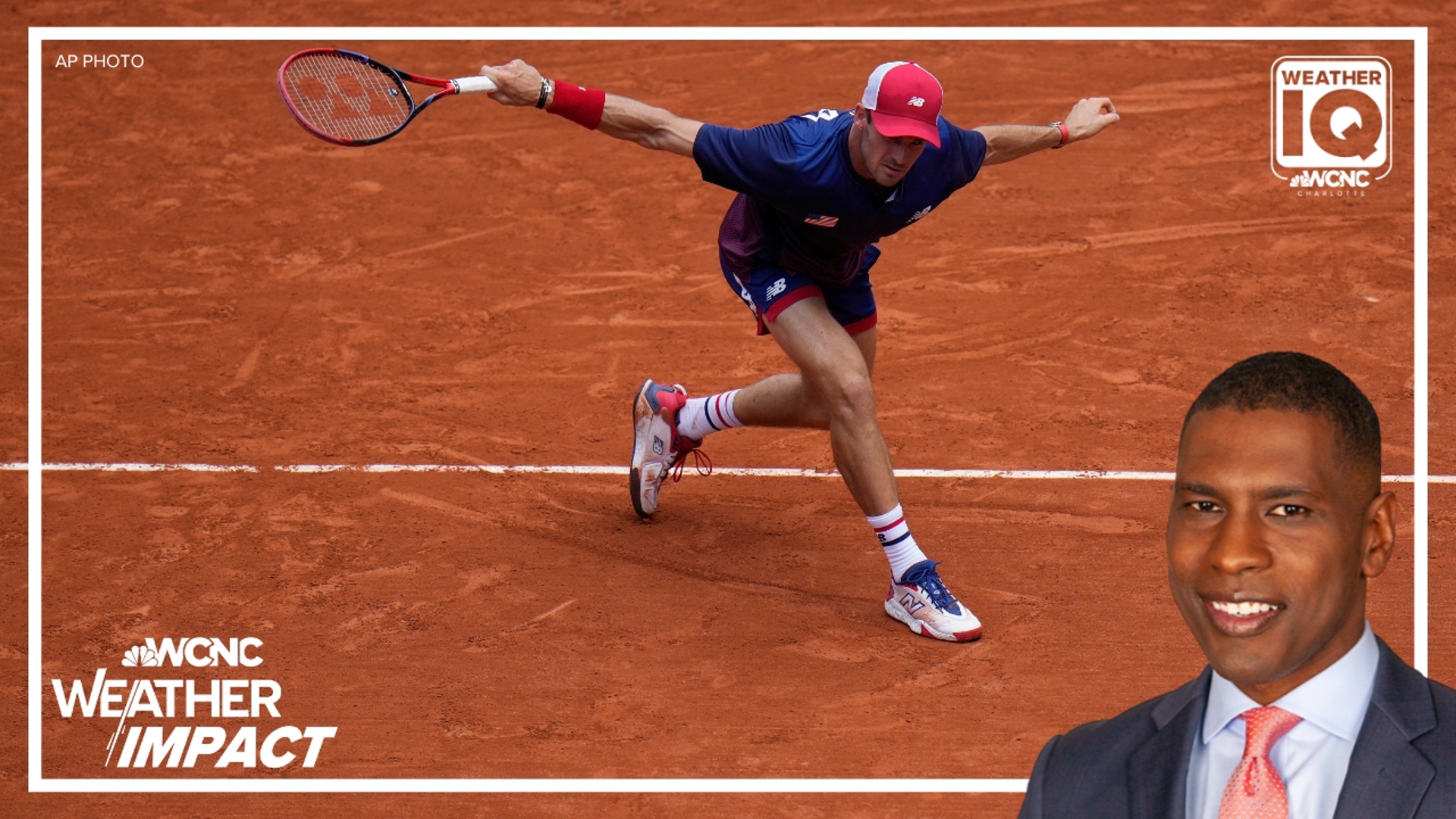CHARLOTTE, N.C. — This year, Olympic tennis matches are on clay courts for the first time since the 1992 games in Barcelona.
While playing tennis on clay can be a challenge, some might not realize weather conditions can impact their chances on the court too.
The weather in Paris
Summer temperatures in Paris range between 67 to 104 degrees. This forces players to switch up their strategies as the weather changes.
The top 3 primary weather elements that impact tennis players are wind, temperature, and humidity.
Wind
Wind speed and direction can be unpredictable. Athletes must focus on their serves and adjust their hitting power.
- Can throw off the ball toss while serving.
- Hitting into the wind requires a harder hit.
- Less power needed with the wind at your back.
- Shot selection is important such as more topspin.
Temperature
A tennis player will feel the heat and the temperatures will impact the ball’s reaction too.
- Heat radiates off the courts & feels hotter for players.
- A hot tennis ball is more elastic & bounces higher.
- Heat causes the ball to skid & reduces reaction time.
Humidity
If there is humidity during the match, the ball’s weight may change and it can exhaust even the most elite athlete.
- High humidity keeps the players sweaty.
- Humidity can impact the weight of the ball.
- More weight and stress on the players
How weather impacts clay courts


Charlotte City Tennis Director Aaron Mullennix said with Olympic tennis being played on red clay, the pace of play is typically slower compared to traditional hard courts.
“The hotter it is on a clay court, the clay will actually dry up… meaning it is a much faster surface of clay," Mullennix said. "So, it’s still slower than hard court but plays a little more like a hard court when it’s super-hot.”
How weather impacts tennis balls


Mullennix said bad bounces are common on clay courts because when the ball hits the clay, it loses its initial speed and it can then bounce even higher.
"If my average ball is 80-85 miles per hour and on a clay court, it bounces and slows that pace down," Mullennix said. "So, somebody who may not be able to get to it on hard court would be able to get to it on clay court."
How weather impacts tennis racquets


Weather can even impact the racquets because of temperature changes. Players want less tension on their strings when it's colder. This helps generate more power in their strokes. Players then want their strings tighter when it's warmer to give them more control.
Contact KJ Jacobs at kjacobs3@wcnc.com and follow him on Facebook, X and Instagram.
WCNC Charlotte’s Weather IQ YouTube channel gives detailed explainers from the WCNC Weather Impact Team meteorologists to help you learn and understand weather, climate and science. Watch previous stories where you can raise your Weather IQ in the YouTube playlist below and subscribe to get updated when new videos are uploaded.

